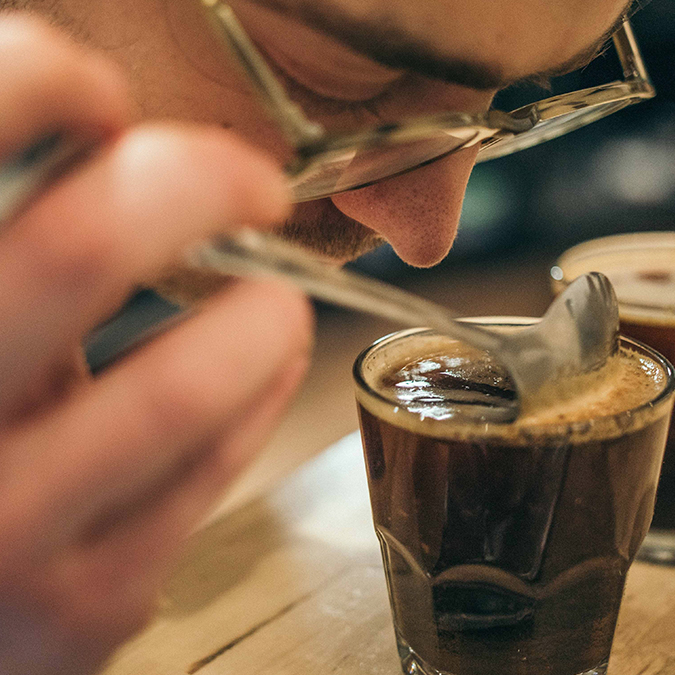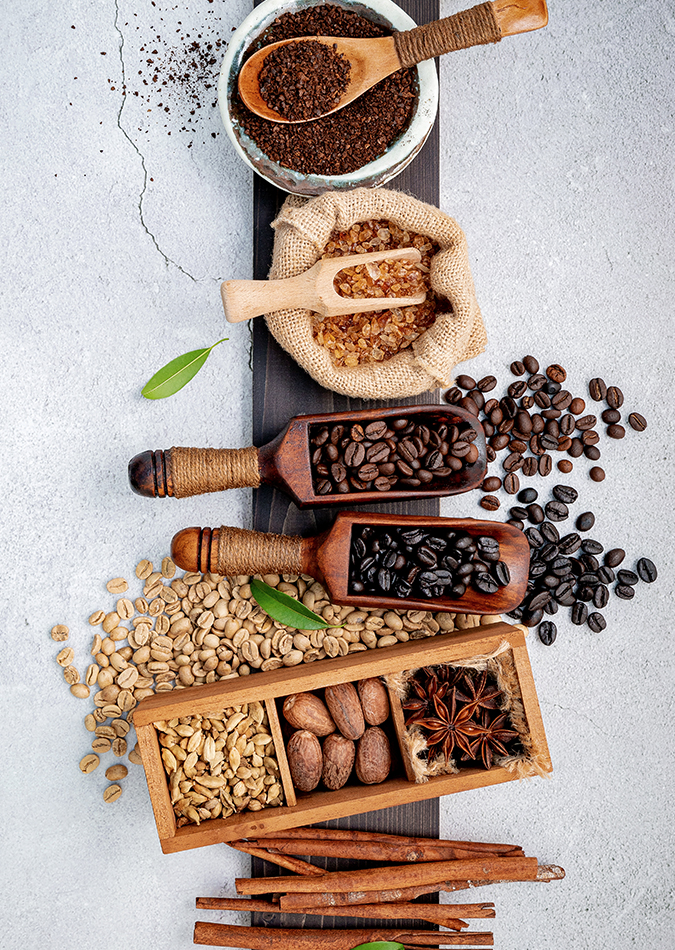Coffee is amazing (that’s a fact) but “amazing” isn’t the most accurate way to describe it. Bitter, nutty, creamy, flowery, fruity, herby, chocolatey, acidic, sharp, strong, spicey, winey, sour… are just SOME of the words that we use when we want to express how to describe coffee.
Learn The Best Words To Describe Coffee
The taste profile of a cup of coffee changes depending on several factors, such as the origin of coffee, the type, the blend, the washing and roasting method, and even the method of preparation. Describing coffee accurately may sound difficult to those new to the coffee world, but here we have some of the most commonly used words to describe coffee and its taste & aroma.
Our favorite way of learning how to precisely describe coffee is by recording everything on a coffee tasting journal. A coffee tasting journal will make it easier to track, log, and rate coffee varieties, and sooner than you think, you’ll be able to tell apart Colombian coffee from Peruvian coffee in two sips.
Also, we created a coffee tasting wheel completely free and ready for instant download! Print it here, you’ll need it.
Feeling excited? Let’s go!
How do we taste coffee?

When you drink or eat something, you process the taste in two different places: mouth and nose. As you learn to properly taste coffee, it’s important to separate these two parts. The first part of the process happens in your mouth; specifically, on the tongue. This is where you can detect acidity, sweetness or bitterness, saltiness, and savoriness.
Learning to differentiate among coffee beans is a bit more difficult than when we’re tasting, but all it takes is a bit of practice to figure out if the coffee smells like chocolate, berries, caramel, or something else.
For most of us, these experiences aren’t completely independent from each other, and separating taste and smell can be difficult. The easiest way to achieve it is by focusing on one particular aspect at a time, rather than trying to detect every aspect in one go.
What are the characteristics of coffee?

You don’t need to be a professional coffee taster to learn how to describe coffee. In fact, you can learn and practice in your own home, as long as you know the proper terms and what to expect from them.
- Sweetness: How sweet is the coffee? Consider that this is a very desirable trait in coffee; the sweeter the better!
- Acidity: How acidic is the coffee? If there are a lot of unpleasant acidities, the coffee is considered sour. On the other hand, if the acidity is pleasant, it will make the coffee crispy or juicy.
- Mouthfeel: When you take a sip of the coffee, does it feel light, delicate, similar to tea? Or is it rich and creamy? It’s important to mention neither is better than the other; it’s all about preferences.
- Balance: Defining coffee’s balance is a bit more difficult. Ask yourself if one aspect of the taste dominates more than the others, or if the taste and flavors in the cup are harmonious?
- Flavor: Describing flavor is not about the different flavors and aromas, but also about how pleasant you find them.
How to describe coffee aroma

We all know the feeling of entering a room and smelling coffee, even before getting a glimpse of the cup, and you just know someone right now is enjoying a nice cup of coffee. Coffee usually has a very noticeable aroma, although it changes depending on the blend and it is one of the first things that you will notice even before tasting the coffee.
- Caramelly: As the name implies, caramelly smells close to caramel, similar to sugar-browning or candy.
- Chocolaty: Chocolaty coffee doesn’t really smell like the chocolate bars you’d see in a store; it’s more of unsweetened cocoa with a hint of vanilla.
- Citrusy: Coffee aromas can also be herbal, fruity, or flowery. A citrus coffee will smell like lemon, oranges, or fresh apples.
- Fragrant: A fragrant coffee is one that smells a bit like coriander seeds, cardamom, or caraway.
- Floral: Fruity coffee aromas also fall under the enzymatic category, but it’s different from smells like tulips or lavender, and they smell more like tea rose.
- Nutty: Nutty coffee falls under the sugar-browning category, and it will smell like roasted peanuts or walnut.
- Resinous: Resinous coffees fall under the dry distillation category, and they smell similar to some medicines.
- Spicy: Spicy coffee can be warming like pepper, cedar, or pungent. It can smell like clove or thyme.
How to describe coffee taste

The easiest way to describe the taste and body of your coffee is by taking a sip and see the flavor that the coffee leaves on your tongue, as well as the thickness of the coffee.
- Bitter: It will taste harsh or pungent.
- Bland: Flavorless coffee, it happens when the beans to water ratio aren’t right or there’s too much milk in your cup.
- Full: Coffee is described as full when the body has a heavier texture than other coffees. The opposite of full is “thin”.
- Sweet: Normally, most coffees aim to be sweet as it’s easier on the palate.
- Salty: It may be astringent, rough, and even sharp.
How to describe coffee acidity

As we mentioned before, talking about the acidity of coffee isn’t simply about its pH level – if someone asks you how acidic coffee is, they mean how it feels and tastes on the tongue. It can be hard to describe at first, but thinking about the sharpness might make it easier to determine.
Here are the most commonly used words to describe coffee acidity:
- Bright: It means you can taste all of the flavors very clearly.
- Dull: Dull doesn’t mean it’s bad or boring: it just means the acidity is flat or mellow.
- Nippy: Nippy means the coffee has high acidity, and it feels sharp on the tongue.
- Sour: Generally means the brew wasn’t done right, and it has an unpleasant bitter taste.
